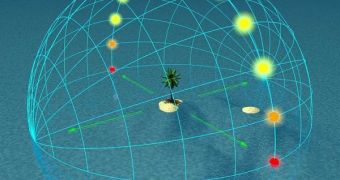The summer will be over in a few hours. At 5:18 pm EDT (2118 GMT) today, autumn will start, at least astronomically speaking. This doesn't mean that fall-like weather will start appearing today or tomorrow, but, as far as the cosmic alignment of celestial bodies goes, the Earth has entered its third yearly season. On September 22nd, astronomers announced, the Sun would be exactly perpendicular to the Equator, and would mark the end of summer. There are two equinoxes every year, one in March, and another one in September, but their dates constantly change, LiveScience reports.
This happens because our planet does not follow the exact same orbit around the Sun every year. It is constantly influenced by the gravitational tug of other celestial bodies. Additionally, one year does not have an even number of days, and our planet revolves around its star in a non-circular orbit. All these phenomena cause our planet to be tilted differently during each equinox and solstice, which means that the winter solstice can, for instance, occur on either December 20th or 21st, while the autumn equinox can take place on either September 22nd or 23rd.
The knowledge that solstices and equinoxes exist has been around since at least the fourth century BC, when people in the Americas devised calendars to forecast how these events would fit within the following years. Some of these calendars were so accurate that, when they stopped clocking time, people believed they announced the end of the world. Such is the case with Mayan calendars, which stop on December 12th, 2012. Many believe that this is the day when the world will end, in spite of the fact that the only thing the stones prove is that the ancient civilizations were excellent at observing the night sky.
Solstices and equinoxes are a direct consequence of the fact that our planet is tilted at a 23.5-degree angle from the Sun, and that it revolves around its own axis in about 24 hours. When coupled with its rotation around the Sun – one every 365 days or so –, these factors combine to produce the reoccurring events that mark the beginning and end of seasons. Solstices are, for instance, caused when the tilt of the Earth's axis is mostly inclined toward or away from the Sun, while solstices take place when the tilt of the Earth's axis is inclined neither away from nor towards the star.

 14 DAY TRIAL //
14 DAY TRIAL //